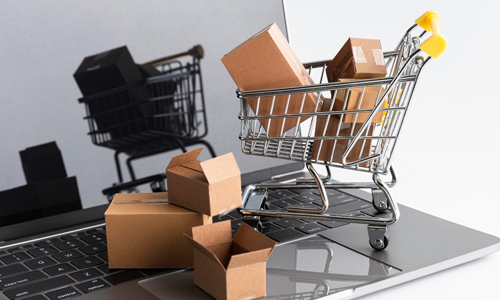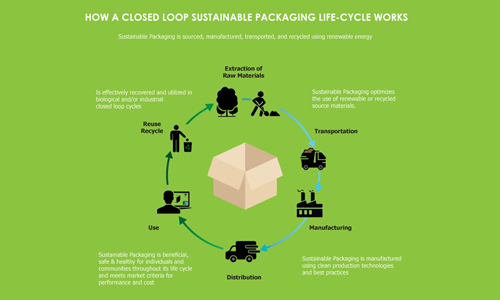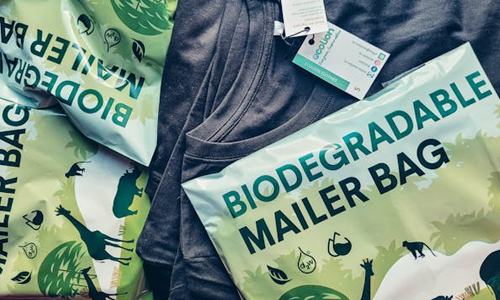Click, Buy, Pollute? Environmental Impact of Online Shopping and Ways for Sustainable E-commerce

Tech news
Unboxing the Environmental Burden: Packaging Problems
 One of the most glaring environmental concerns surrounding online shopping is the issue of packaging. E-commerce relies heavily on single-use packaging materials like cardboard boxes, plastic wrap, and air pillows. While some of these materials may be recyclable, the sheer volume generated by online shopping strains recycling infrastructure and contributes significantly to landfill waste.
One of the most glaring environmental concerns surrounding online shopping is the issue of packaging. E-commerce relies heavily on single-use packaging materials like cardboard boxes, plastic wrap, and air pillows. While some of these materials may be recyclable, the sheer volume generated by online shopping strains recycling infrastructure and contributes significantly to landfill waste.
Delivery Dilemmas: The Carbon Footprint of Online Shopping
The last-mile delivery – getting your purchase from the warehouse to your doorstep – also contributes to the environmental burden. Delivery trucks often travel long distances with single packages, leading to increased carbon emissions and traffic congestion. Furthermore, the growing demand for speedy deliveries incentivizes even more frequent trips, further amplifying the environmental impact.Return Regret: The Unsustainable Side of Online Shopping Convenience
Another factor adding to the environmental cost of e-commerce is the high rate of online returns. Studies suggest that online return rates can be significantly higher compared to brick-and-mortar shopping. These returned items often require additional transportation and repackaging, creating a cycle of waste and emissions.Charting a Course for Sustainable Online Shopping
 Despite the challenges, there are ways to make your online shopping habits more sustainable. Here are some solutions to consider:
Despite the challenges, there are ways to make your online shopping habits more sustainable. Here are some solutions to consider:
Embrace Conscious Consumerism
 Before hitting “buy,” consider the true need for the item. Ask yourself if you can repair an existing item instead or borrow from a friend. This reduces unnecessary purchases and the environmental footprint associated with them.
Before hitting “buy,” consider the true need for the item. Ask yourself if you can repair an existing item instead or borrow from a friend. This reduces unnecessary purchases and the environmental footprint associated with them.
Choose Sustainable Brands
 Many online retailers offer eco-friendly products with minimal packaging or packaging made from recycled materials. Research brands committed to sustainability and prioritize them over conventional options.
Many online retailers offer eco-friendly products with minimal packaging or packaging made from recycled materials. Research brands committed to sustainability and prioritize them over conventional options.
Support Companies with Green Delivery Practices
Look for online retailers that utilize sustainable delivery options like electric vehicles, consolidated deliveries, or in-store pickup points. These choices can significantly reduce the carbon footprint of your online purchases.Think Twice Before You Return
Carefully review product descriptions and size charts before buying to minimize the chances of needing to return an item. Free return policies might seem convenient, but they come at an environmental cost. Consider returning items only when absolutely necessary.Embrace Minimalist Packaging
 When possible, opt for sellers who offer minimal or plastic-free packaging options. You can also reuse packaging materials from past deliveries for sending gifts or homemade crafts.
When possible, opt for sellers who offer minimal or plastic-free packaging options. You can also reuse packaging materials from past deliveries for sending gifts or homemade crafts.
The Power of Informed Consumers
 By becoming informed consumers and making conscious choices, we can collectively push the e-commerce industry towards more sustainable practices. Holding online retailers accountable for their environmental impact is crucial. Look for companies that prioritize eco-friendly packaging, utilize sustainable delivery solutions, and offer transparent information about their environmental practices.
By becoming informed consumers and making conscious choices, we can collectively push the e-commerce industry towards more sustainable practices. Holding online retailers accountable for their environmental impact is crucial. Look for companies that prioritize eco-friendly packaging, utilize sustainable delivery solutions, and offer transparent information about their environmental practices.
Sustainable Shopping: A Collective Effort
Building a greener online shopping landscape requires a collaborative effort. Consumers, retailers, and policymakers all have a role to play. By embracing sustainable practices, advocating for change, and supporting eco-conscious businesses, we can transform online shopping into a force for good – for both our wallets and the planet. The next time you click “add to cart,” remember the environmental impact of your purchase. With a little planning and informed decision-making, we can navigate towards a future where online shopping thrives in harmony with the environment. After all, a little green consciousness can go a long way in ensuring a sustainable future for e-commerce.Frequently Asked Questions?

01
AR and VR
Snap Engages Users with New AR & ML Toolkit
May 7, 2024

01
Tech Gadgets
Power Down to Power Up: How a Digital Detox Benefits You and the Planet
May 6, 2024
01
Tech news
Gatherings Just Got Easier: WhatsApp Communities Now Have Built-In Event Planning
May 5, 2024

01
Tech news
Tech for a Greener You: Apps to Empower Your Sustainable Lifestyle
May 3, 2024
SUSBSCRIBE TO OUR NEWSLETTER
Join our subscribers list to get the latest news and special offers.
Snap Engages Users with New AR & ML Toolkit
Power Down to Power Up: How a Digital Detox Benefits You and the Planet
Gatherings Just Got Easier: WhatsApp Communities Now Have Built-In Event Planning
iPhone Repair Just Got Easier: No More Disabling Find My Before Service